- JAPANESE
- LANGUAGE
X
 THAT IS GOOD
THAT IS GOOD
Hi, I’m Kobayashi.Last time (https://thatisgood.jp/en/taketokobayashi003/), I talked about how humans have been characterizing transcendent beings since ancient times, and about the ancient Kamigami. This time, I would like to talk about how the old Kamigami in Japan have been transformed over time.
According to the “Survey of Japanese National Character” conducted every five years by the Institute of Statistical Mathematics, 28% of people believe in a particular religion, while 72% do not. This means that 7 out of 10 people consider themselves to be non-religious in Japan. The data is a bit old, but I think the percentage is still the same today. How many countries have such a majority of non-religious people? Only six out of 232 countries (countries and regions combined) according to the International Pew Research Center in 2014. These are all countries and regions that are currently controlled by the Communist Party or where the Communist Party was a strong force in the past. This is because in communist-controlled countries, the very idea of communism is at odds with religion, and religious people and religious practices are often suppressed. So Japanese people are unbelievers? It is not that way. There are many people in Japan who are not aware that they believe in a certain religion, but still engage in religious acts. Therefore, despite the fact that more than 70% of the respondents say they are not religious, more than 60% of the respondents answered “Yes” to the question “Is it important to be religious?* (Same survey) After celebrating Christmas, we go to a shrine for Hatsumode (New Year’s visit) and we practice funerals with Buddhism style… To put it badly, we may be unprincipled and lacking in identity, but I think it’s great that Japanese are tolerant of religion. I am not a religious person, but I do believe in a transcendent being, and I consider myself to be pantheistic, not irreligious.
Shinto is a religion ( belief ) unique to Japan. Although it is called a religion, there is no founder, nor are there any scriptures or sutras. The origins of Shinto can be traced back to the animism of the Jomon period, a form of belief in various natural objects, such as the sun, moon, rocks and boulders, waterfalls, oceans, forests, and mountains.
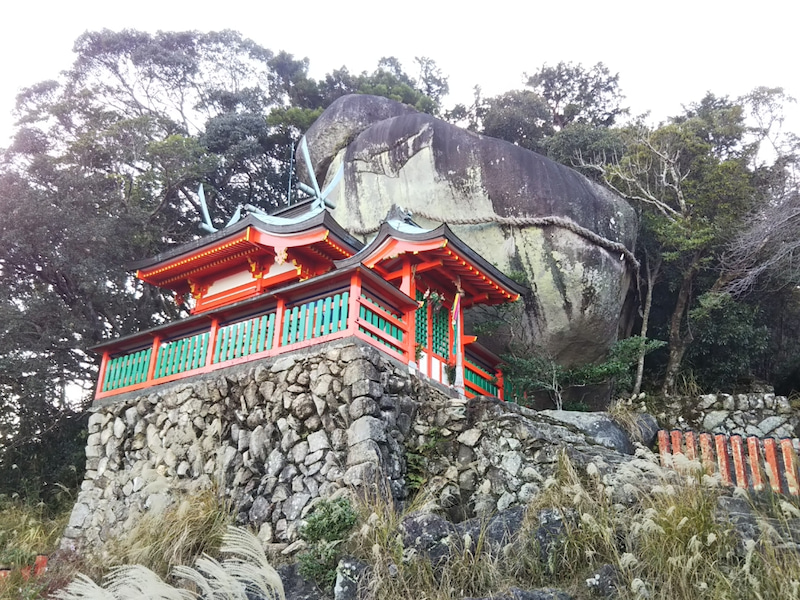
The building of shrines that we associate with the word “Shinto” was actually established under the influence of Buddhism. Originally, mountains and forests themselves were sacred, so there was no need for a main shrine. As a religion, Shinto was gradually established between the 7th and 9th centuries, in connection with the political systems of the central and local governments. The term “Shinto” itself came into wide use when it was contrasted with Buddhist beliefs. In the process of “systematization” of Shinto, many old Kamigami must have been incorporated into the system or dropped out of it. In the area where I have lived in Japan, I am a *Ujiko of the Ryukomyo Shrine (Kamakura City, Kanagawa Prefecture).
*Ujiko means people who live in the area and perform matsuri to the local Ujigami(god).
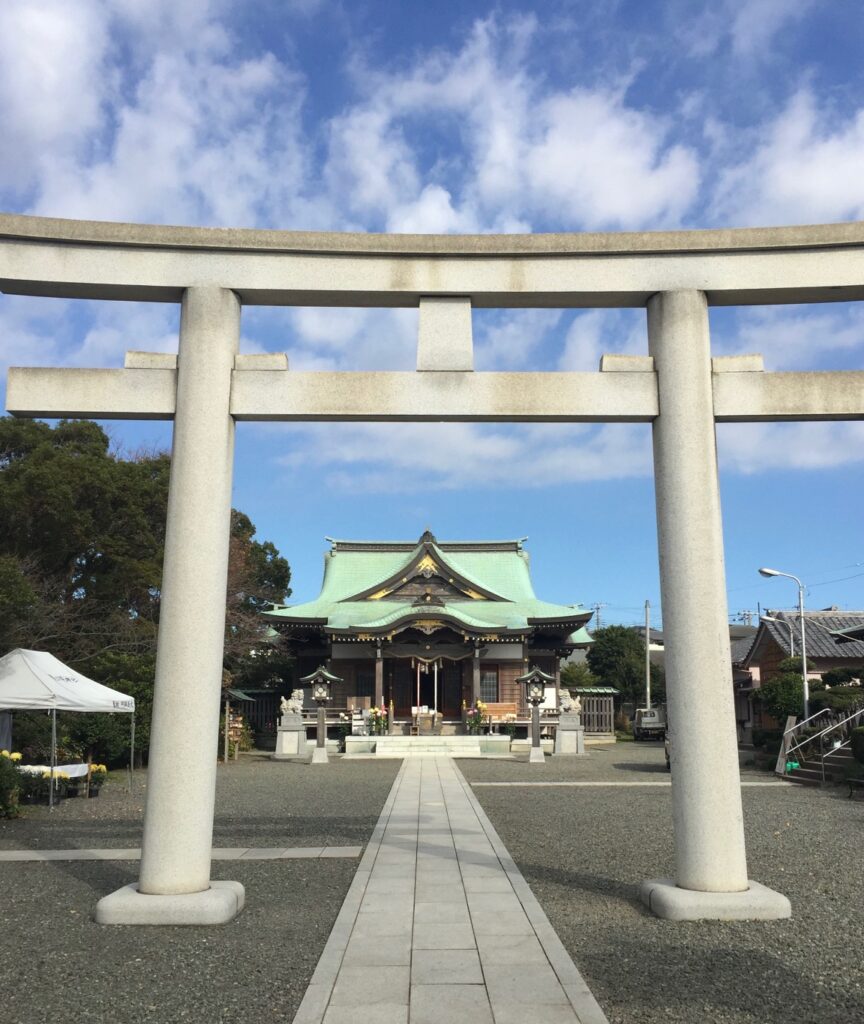
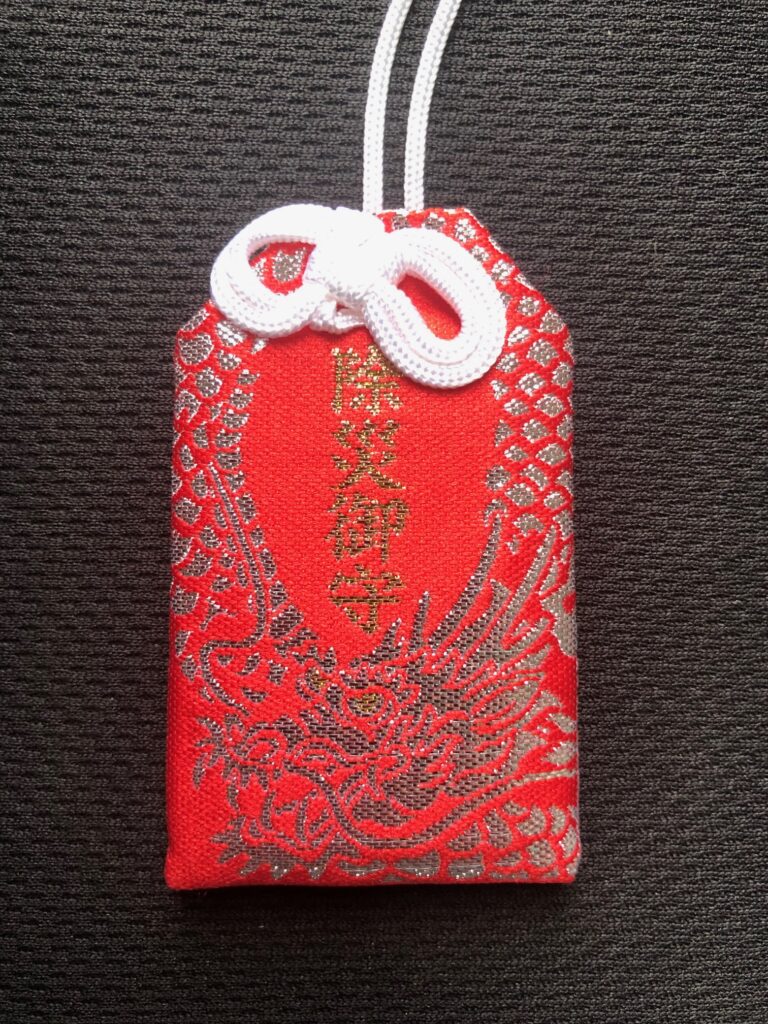
According to the shrine’s origin story, Tamayorihime no Mikoto was the mother of Emperor Jinmu, an ancestor of the sea gods, and was worshipped as a dragon god. The other deity of the shrine, Gozuryu-Ohkami, is said to be a dragon who was warned of his evil deeds by Enoshima Benzaiten, and is closely related to Enoshima Benzaiten. After the dragon mended his mind and turned into a rocky mountain, the villagers of Tsu village (Koshigoe and the adjacent area of Tsu, current city of Kamakura) built a shrine on the rock (Ryukou) which is the mouth of the dragon, called it Shirahige Myojin, and made it the village guardian, which is said to be the origin of Ryukomyo Shrine. The deity of the shrine is Tamayorihime no Mikoto and Gozuryu-Ohkami. As I mentioned in the previous article, the kami associated with snakes and dragons often belong to an older layer of kami. And myths and legends are monolithic versions of historical facts, often altered to suit the authorities of the time. In my understanding, the story of Ryukomyo shirine is also based on the historical fact that a Jomon (or similar) clan that originally lived in the Kamakura City area was conquered or subjugated by the (probably) Yamato clan which is the ancestors of emperor, that came later. Following images are my artwork based on this story line “Gozuryu-Ohkami“.


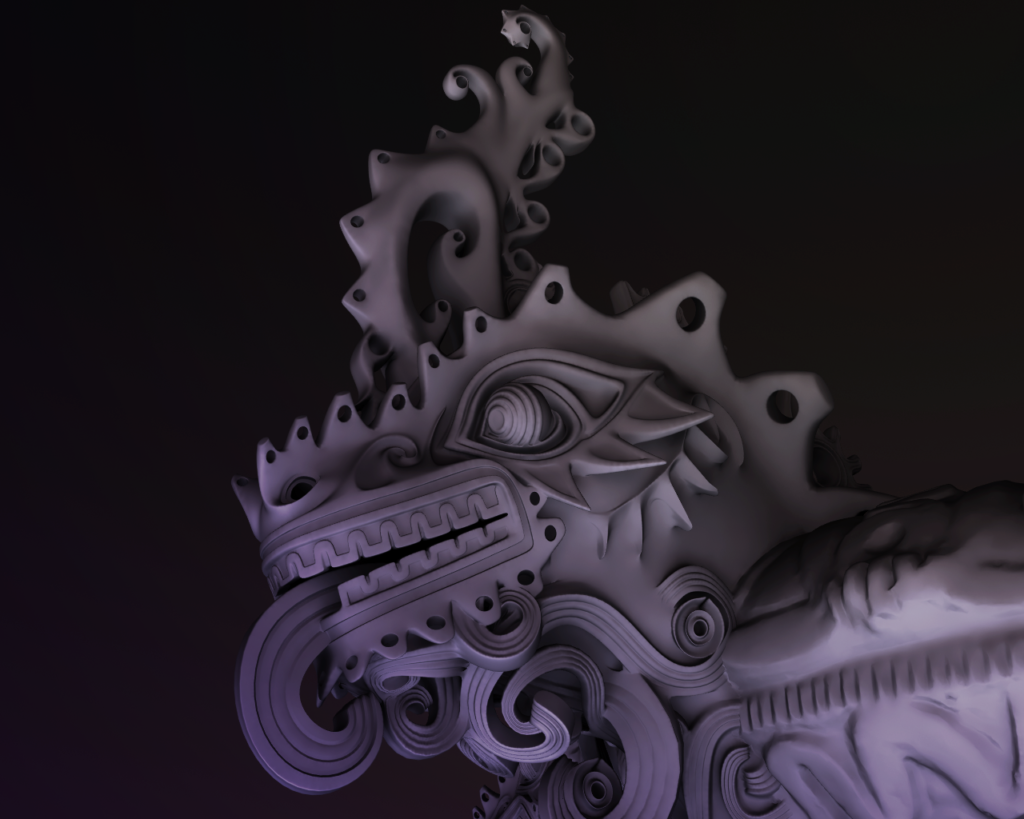
“To express the “old kami”, I used digital scanned 3D data of real Jomon Doki(pottery), excavated at the Ichinosawa site in Yamanashi Prefecture. The five dragon heads are a fusion of Jomon design, Mayan, Aztec, other tribal design, and animism’s lineage of kaiju(monsters) which, when combined with Jomon pottery, visually represent the connection from animism to modern subculture. The plan was to 3D print this work and dedicate it to the Ryukou Myojin Shrine, but it is still only complete as 3D data, so I would like to realize the dedication when I return to Japan.
Since there have been “Yaoyorozu no (eight million) kamigami” in Japan all the way from ancient times, the majority of them were not incorporated into the religious system. Then, what happened to the other Kamigami, the ones who dropped out of the belief system? Some are forgotten, some live in folk beliefs, and some are transformed into “yokai” and survive to the present day. Here’s a dictionary definition of the word “yokai”, Yōkai (妖怪, “ghost”, “phantom”, “strange apparition”) are a class of supernatural monsters and spirits in Japanese folklore. The word ‘yōkai’ is composed of the kanji for “bewitching; attractive; calamity” and “spectre; apparition; mystery; suspicious.” Yōkai are also referred to as ayakashi (あやかし), mononoke (物の怪) or mamono (魔物). The characteristics of yōkai range diversely from malevolent and mischievous entities believed to cause misfortune and harm, to those who are considered to bring good fortune to those who encounter them.(Wikipedia)
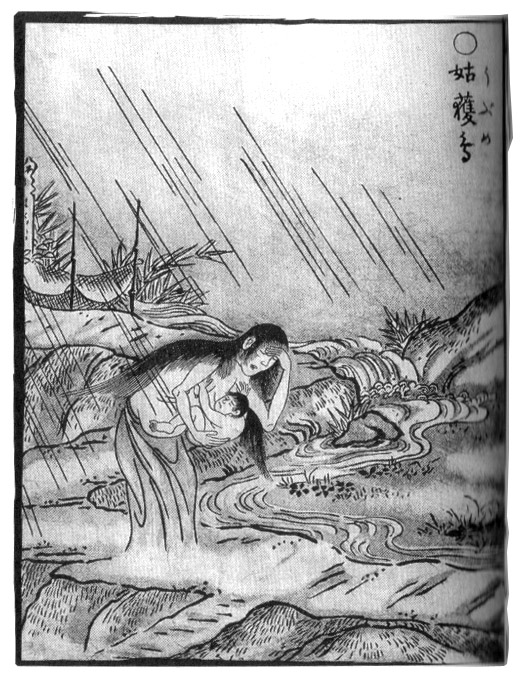
This is a bit off topic, but it is very difficult to translate “yokai” into English. The dictionary (Weblio) says “ghost,” but “ghost” is a bit different from yokai, and “monster” is too Godzilla-like. I think this is because the nature, origins, and characters of yokai are so diverse that they cannot be summed up in a single word. For example, Ubume is a yokai of pregnant women, and the concept that a dead pregnant woman who is buried without cremation becomes a Ubume has existed since ancient times. Many of them are said to wear a waistcoat stained with blood, hold a child in their arms, and chase after people walking in company. They are in the category of yokai, but as you can see from their visuals, they have a strong ghostly element.
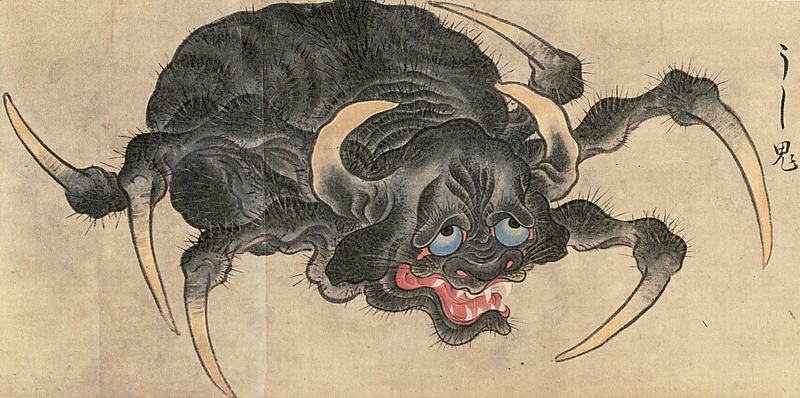
On the other hand, the majority of Gyuki are said to be extremely brutal and ferocious, spitting poison and preferring to eat people to death. According to the lore, the head is an ox with the body of an Oni(ogre, demon) from the neck down. In some cases, the head is an Oni and the body is an ox, but the most famous visual image is that of a spider with the head of an ox, which, combined with its ferocious nature, gives it a strong monster-like element.
The lore of the most famous yokai, Kappa has been passed down from generation to generation throughout Japan. Its origins differ between western and eastern Japan. In western Japan it is said that it came from the continent(China) linked to the Kahaku(god of river) faith, but in eastern Japan, kappa is related to *shikigami of *Seimei Abe, or *gohō dōji of *En no Ozuno, which was created or summoned by their master to help them. All of them have in common that the paranormal beings such as kami and spirits have fallen or forgotten.
*Shikigami are conjured beings, made alive through a complex conjuring ceremony. Their power is connected to the spiritual force of their master, where if the invoker is well introduced and has much experience, their shiki can possess animals and even people and manipulate them, but if the invoker is careless, their shikigami may get out of control in time, gaining its own will and consciousness and can even raid its own master and kill them in revenge. Usually shikigami are conjured to exercise risky orders for their masters, such as spying, stealing and enemy tracking.
*Abe no Seimei was an onmyōji, a leading specialist of onmyōdō during the middle of the Heian period in Japan.[2] In addition to his prominence in history, he is a legendary figure in Japanese folklore and has been portrayed in a number of stories and films. Seimei worked as onmyōji for emperors and the Heian government, advising on the spiritually correct way to deal with issues. He prayed for the well-being of emperors and the government as well as advising on various issues. He was also an astrologer and predicted astrological events. He enjoyed an extremely long life, free from any major illness, which contributed to the popular belief that he had mystical powers.
*A gohō dōji (child of the defense of the Law) is a type of guardian spirit from Japanese Buddhist folklore devoted to serving followers of the dharma. In classic stories from medieval collections such as the Uji Shui Monogatari, it is generally depicted as a young boy wearing a collar of swords, with a large sword in one hand and a noose in the other. It flies through the air by riding a Wheel of Dharma.
*En no Ozunu, also En no Ozuno, Otsuno was a Japanese ascetic and mystic, traditionally held to be the founder of Shugendō, the path of ascetic training practiced by the gyōja or yamabushi.
I think fairies of Europe(Ireland is the most famous for it) are the closest things to yokai. When we think of fairies, we usually think of small humanoid beings with wings, like Tinker Bell in Peter Pan, but they are also as diverse in appearance and nature as yokai. Some are friendly to humans and help us, while others try to trick us or sometimes try to take our lives. There are many theories for the origin of fairies, among them the ethnic memory of conquered peoples, pagan gods and indigenous gods stripped of their divinity. I believe that both yokai and fairies are characterized by giving names to forgotten old kamigami or mysterious phenomena that occur in nature. Humans can’t recognize things that don’t have names, and the fact that we can’t recognize them cause us vague fear. I believe that by characterizing extraordinary phenomenon or existence, we have been able to transform it into an existence that is somewhat understandable.
さて、妖怪を語る上で「ゲゲゲの鬼太郎」の作者水木しげる氏は外せません!がその話はまた次回で。
Now, when talking about Yokai, we can’t skip Shigeru Mizuki, the creator of “Gegege no Kitaro”! But I’ll talk about that next time.
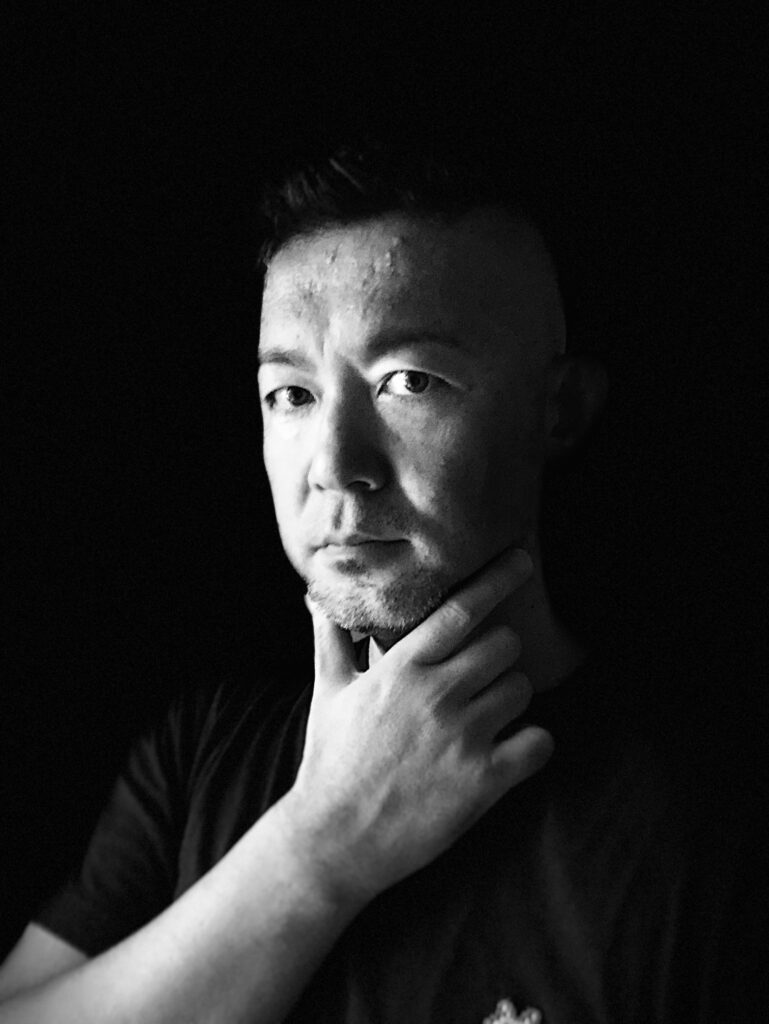
Taketo KOBAYASHI
Post-digital artist
ARTSTATION
Taketo Kobayashi (artstation.com)
Instagram ID
@humanoise
After having experience of 3D graphics and animation at Tokyo Institute of Technology creative laboratory, and Gonzo Co., Ltd., Taketo started his own project as an artist. Using digital technology like CG, 3D printing as his “brush”, Taketo creates a wide variety of artworks from 3D printed sculpture to animation. In a collaboration project XSENSE, Taketo utilizes CGI in street art to create murals(Denver, CO, USA), also using his unique style animation for stage design and collaborated with contemporary Noh theatrical group. In addition to creating his own artworks, Taketo curates the group art show “ARTs of JOMON” hosted by Japanese non-profit JOMONISM, keep introducing contemporary artists/artworks influenced by ancient Japanese Jomon culture.(Aomori Museum of Art / Spiral Garden / Denver International Airport / Kuala Lumpur)
It is Taketo’s mission to make invisible things, emotions, energy, next dimensions of consciousness into “shapes”.
Project/Art history(excerpt)
PROJECTS Digital G-O-D, UltraSuperNew gallery, Singapore, Jan 2020
Haw Par Villa RE•MIX
Chinese Cultural Centre, Singapore , Jan 2020
”Light to Night Festival” Projection mapping at Asian Civilization Museum, Singapore , Jan 2020
A SIGN OF THE TIMES EXHIBITION, Singapore , Jan 2019
”ARTs of JOMON” exhibit @ISETAN KL, Malaysia , Aug 2017, curation&direction
“Colorado Crush”, a mural festival in Denver, CO. Sept 2016, created artwork
“DMS” Collaboration with Canon June 2015, created&exhibited 3D printed prosthetic leg
”Oakley Exhibition” Exhibited artworks at Oakley store Harajuku, Tokyo, Oct 2014
AWARDS “Eisen Herz” Ufab Global Creative award Finalist. 2016. 3D printed cover for “Tamiya mini 4WD” using generative design
“More Than Human type-Unicorn” a 3D printed prosthetic leg. Ufab Global Creative award Finalist. 2015
“SC1-EXP” Zushi International Projection Mapping Competition, Grand Prix. 2014
“Yakushi-Nyorai”(2013)
3DCG model for 3D printing. Winning work at Digital modeling competition held by Japan Society for Graphic Science
Original CG animation ‘Matsuri’(May 2010)
Design, modeling, production coordination. A CG animation based on Japanese ‘Jomon’ culture. Created for promotion of Aomori Prefecture. Accepted at Siggraph Asia 2010. (On VIMEO: https://vimeo.com/25144961)